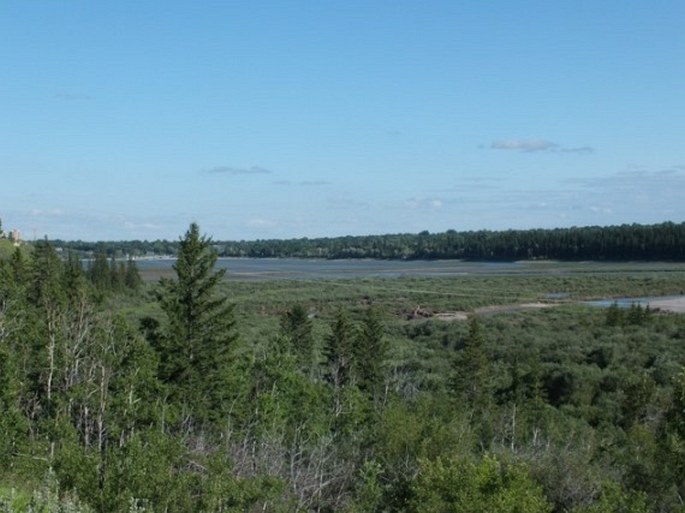Syn.: Lathyrus albidus Eaton, Lathyrus glaucifolius Beck, Lathyrus ochroleucous Hook., orth. var., Orobus ochroleucus (Hook.) A. Br.
Family: Fabaceae Lindl.

Distribution: Species of northern part of North America from Alaska to southernmost states of Washington, northern Idaho, northeastern Wyoming, northwestern Nebraska, northern Iowa, Illinois, northern Indiana and Pennsylvania.
Ecology: Moist woodlands, semi-shade to shade, at elevations from sea level to about 2000 m. Blooms in June and July.

Description: Perennial vine, climbing to about 100 cm high, or just leaning on to surrounding soft vegetation, from a creeping rhizome, stems somewhat flattened. Leaves alternate, compound, 6–10 leaflets, oval, 2.5–5 cm long, hairless, tendril branched to 3 tips; stipules oval, 1–2 cm long. Inflorescence is a 5–10-flowered raceme, from leaf axils; flowers off-white, yellowish white, 12–15 mm long, with a standard, 2 wings and a keel, stamens 10, pistil 1. Fruit is a legume, 2–4 cm long, hairless, 4–6 seeds, considered poisonous.
Threat and protection: Listed endangered in Indiana and New Jersey, threatened in Illinois, Ohio and Pennsylvania.
Note: Lathyrus is an ancient Greek word for pea, pulse or legume.




These images were taken in Canada, Alberta, Calgary, North Weaselhead Natural Environment Park (May 2015).


